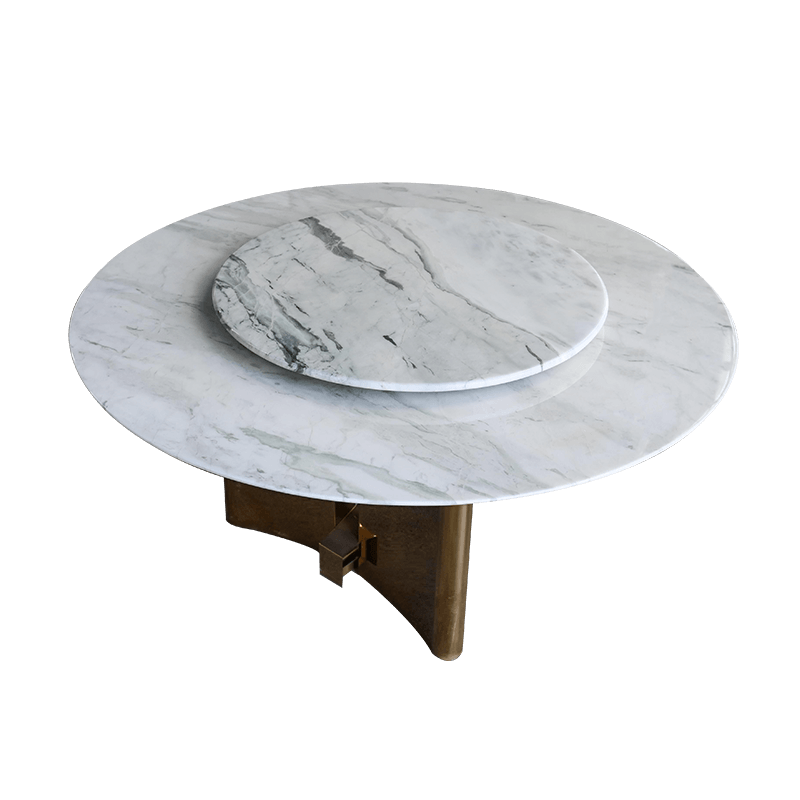Marble, as a natural stone, is composed primarily of calcium carbonate, which exhibits specific thermal expansion properties. When subjected to heat, the molecules within the marble vibrate and move apart, causing the material to expand. Conversely, when temperatures drop, the molecules contract. If these changes occur gradually, marble can typically accommodate the shifts without significant damage. However, rapid or extreme temperature changes can create differential expansion rates within the stone, leading to internal stresses. Over time, this can result in the formation of micro-cracks, which may not be immediately visible but can compromise the structural integrity of the table. In extreme cases, such stress can lead to visible fissures that not only affect aesthetics but also weaken the entire table structure. Users are advised to maintain a consistent temperature around the table to mitigate these risks, avoiding placement near heating vents, direct sunlight, or other heat sources.
The finish applied to a marble table plays a significant role in its resistance to temperature-related damage. Polished marble, while beautiful, can be particularly sensitive to high temperatures. When hot objects are placed directly on the surface, the heat can cause the finish to degrade or discolor, leading to a dull appearance over time. The sudden application of heat can result in thermal shock, which manifests as etching—permanent surface damage that diminishes the shine and luster of the marble. This effect is exacerbated in marble types with more porous structures, where the heat can penetrate more easily. To protect the surface, it is crucial to use insulating materials like trivets or heat pads. Periodic refinishing and resealing can help maintain the protective layer and enhance the table’s resistance to heat damage.
Temperature fluctuations often influence humidity levels, creating conditions where condensation may form on the marble surface. This is particularly true in environments with high humidity, where warm air can cause moisture to settle on cooler marble. If the marble is not adequately sealed, this moisture can penetrate the stone, leading to staining from liquids or even from the minerals in the marble itself. Prolonged exposure to moisture can foster mold or mildew growth, particularly in poorly ventilated spaces. Even with sealed surfaces, it’s important to quickly wipe up spills and moisture to prevent potential long-term effects. To combat these issues, regular application of a high-quality sealant can create a barrier against moisture ingress, while also enhancing the table’s resistance to staining and discoloration.
The overall durability of a marble finished table is directly influenced by its exposure to temperature changes over time. Continuous cycling between hot and cold environments can weaken the stone’s structure, making it more prone to physical damage such as chipping or cracking. The aesthetic appeal can also decline as surface imperfections become more pronounced with wear. Over time, this can lead to a significant reduction in the table’s value, both functionally and aesthetically. Users can enhance the durability of their marble tables by maintaining stable environmental conditions, such as controlling indoor climate with air conditioning or heating systems, and avoiding extreme environmental changes. Implementing routine care practices—like regular cleaning with appropriate pH-neutral cleaners and promptly addressing any signs of damage—can help prolong the lifespan of the table.
Marble Finished Product Processing
